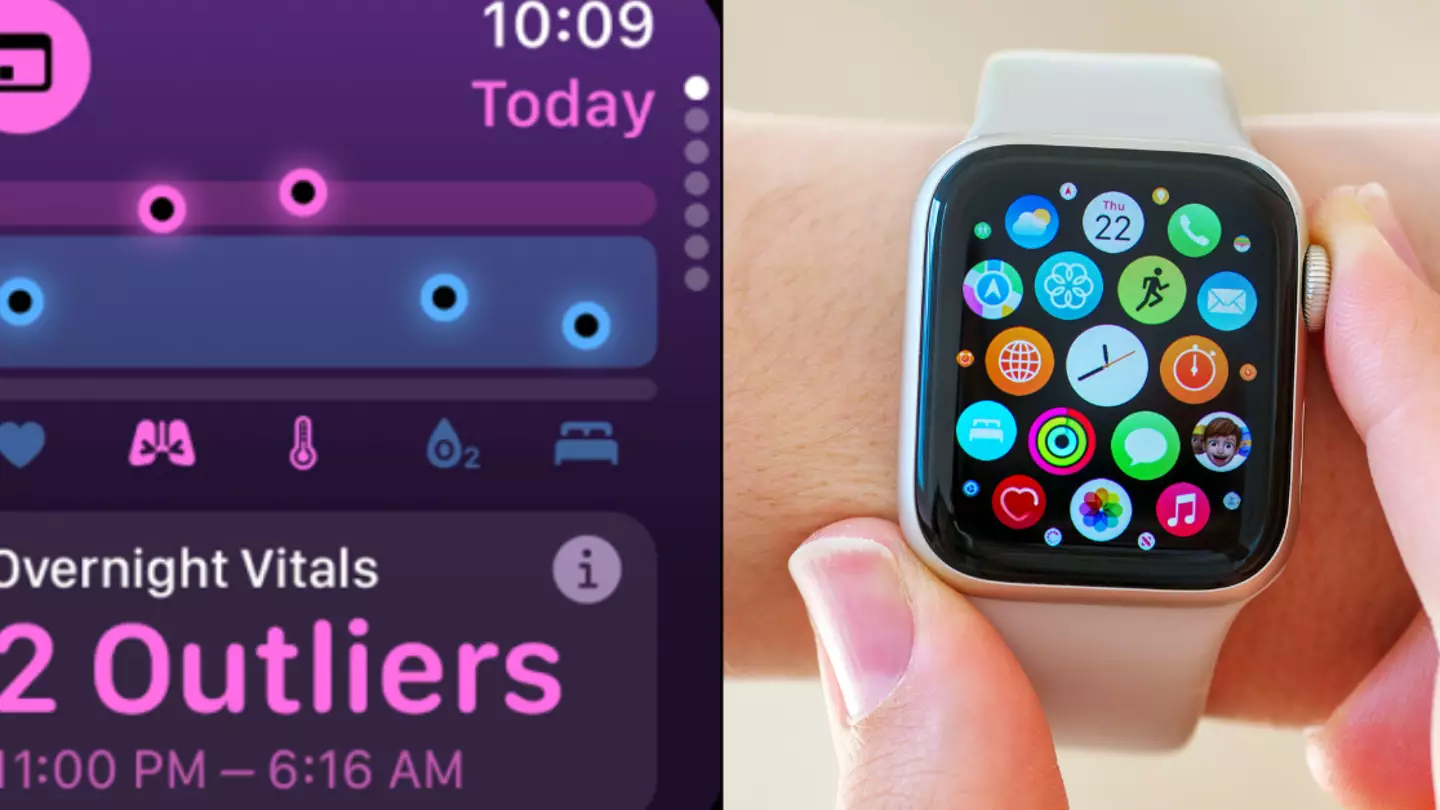
Earlier this week, Apple Watch users found themselves pleasantly surprised after discovering one of the features from the newest watchOS update meant the Vitals app was now able to tell if your body was beginning to exhibit signs of possible illness.
Now, health features on smartwatches aren’t anything new, with users of Apple Watches, Fitbits and Garmins already able to keep track of their pulse and daily step count. Which is fun for the first five minutes after unboxing the watch.
.jpg)
The Vitals app features have caught the attention of Apple users (Apple/Alex Segre/UCG/Universal Images Group via Getty Images)
And it seems for good reason as well.
Taking to Reddit, one person revealed the app had been able to work out they were unwell three days before they began to experience symptoms.
The user wasn’t the only person whose benefitted from the update, with another commenter revealing they’d received a notification about health outliers days before feeling ill.
So how does this work?
How your Apple Watch can detect signs of sickness
Apple hasn’t commented specifically on the addition of Vitals, however, it would appear the app uses data obtained from your sleep in order to obtain the information.
Guidance shared on Apple’s user guide stated the feature is available to anyone who lets their watch track their sleep data, with the information then used to gauge your overnight vitals such as heart rate, blood oxygen* respiratory rate, wrist temperature and sleep duration.
In the Reddit user’s case, their watch had recorded a high body temperature.
Users can then opt to turn on notifications if their watch takes measurements outside of their normal range.
Unfortunately, the app can’t prevent you from getting ill – we’re still a couple decades of medical science away from that.
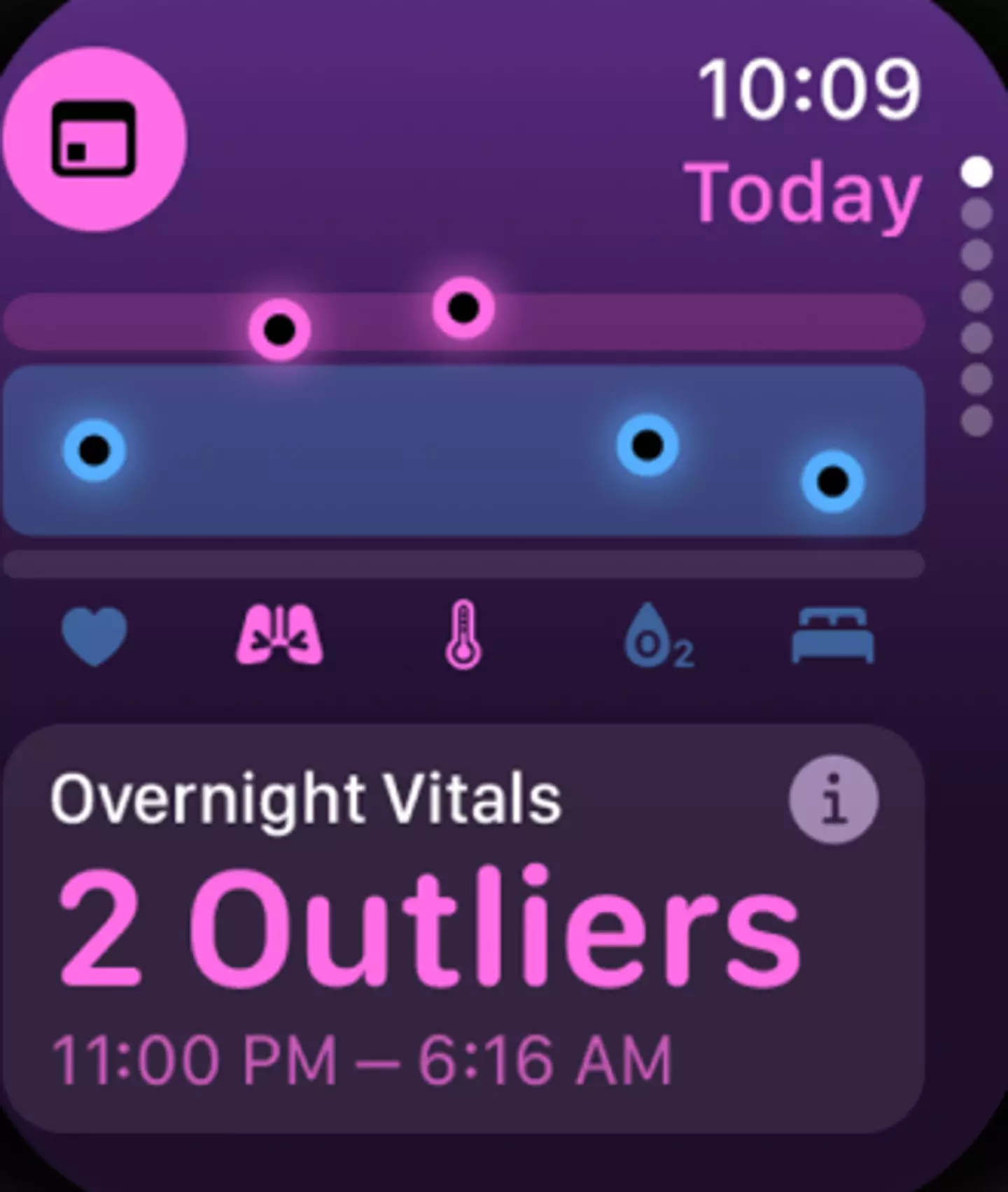
The feature isn’t intended for medical purposes, it’s important to note (Apple/Alex Segre/UCG/Universal Images Group via Getty Images)
However, it can be a handy heads up on what’s to come.
Redditors seemed to be in agreement about the app’s usefulness as well, with one person writing on the thread: “this is my favourite watchOS 11 feature,” while a second added: “Kinda insane how useful this feature can be.”
However it’s worth noting that your watch shouldn’t be used for medical purposes and isn’t a substitute for seeing a doctor if you have serious health concerns.
*Blood oxygen monitoring is not available on models sold in the US on or after 18 January 2024.
If you invest the sizeable amount that is required for an Apple Watch, which starts at £399 for the latest Series 9, you’d expect it to work no matter what.
Well, technology isn’t all that simple and it turns out that there is one feature on the human body that is the device’s kryptonite.
The Apple Watch is still very much in fashion, with many enjoying the convenience that it brings us if our phone is tucked away or in the next room, while several others enjoy the benefits and fitness readings it brings while they exercise.
There’s even a version of the watch available for £1,229 that is a collaboration with Hermes, so it’s fair to say that the demand for the digital watches are there.
However, a viral video is doing the rounds on X, which shows a man altering his body as he, along with several others, is unable to use the device once it’s placed on his wrist for one reason.
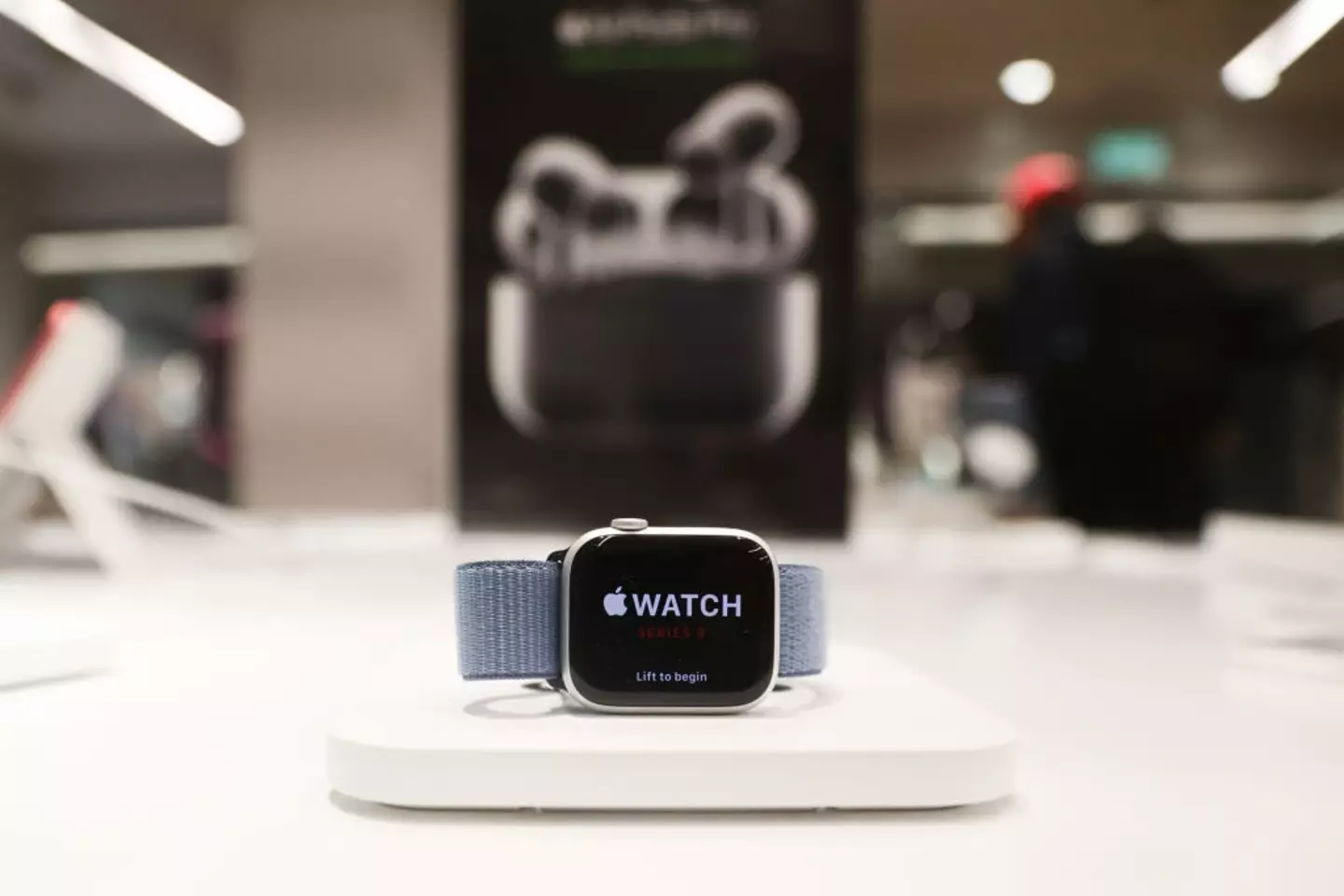
If you have a wrist tattoo, you may want to steer clear of buying an Apple Watch. (Jakub Porzycki/NurPhoto via Getty Images)
In the clip, he can be seen undergoing laser tattoo removal, with the caption reading: “Removing tattoo for Apple Watch use”.
The man has what looks like a tattoo on his forearm, with the design going across his hands too.
He has drawn a circle on his wrist, presumably where the watch will be, and the machine can be seen breaking down the ink in the area into smaller particles for his immune system to break down, allowing his skin to regain its natural pigment.
Social media users couldn’t believe that people with tattoos on their wrists wouldn’t be able to use Apple Watches to their full capability, sharing their confusion in the comments.
One said: “That’s actually crazy well that’s good to know before I’ve gotten either.”
A second put: “Surprised they haven’t fixed this.”
Another user shared: “Watch works perfectly but can’t detect pulse properly therefore all workouts are constantly pausing and can’t count calories.”
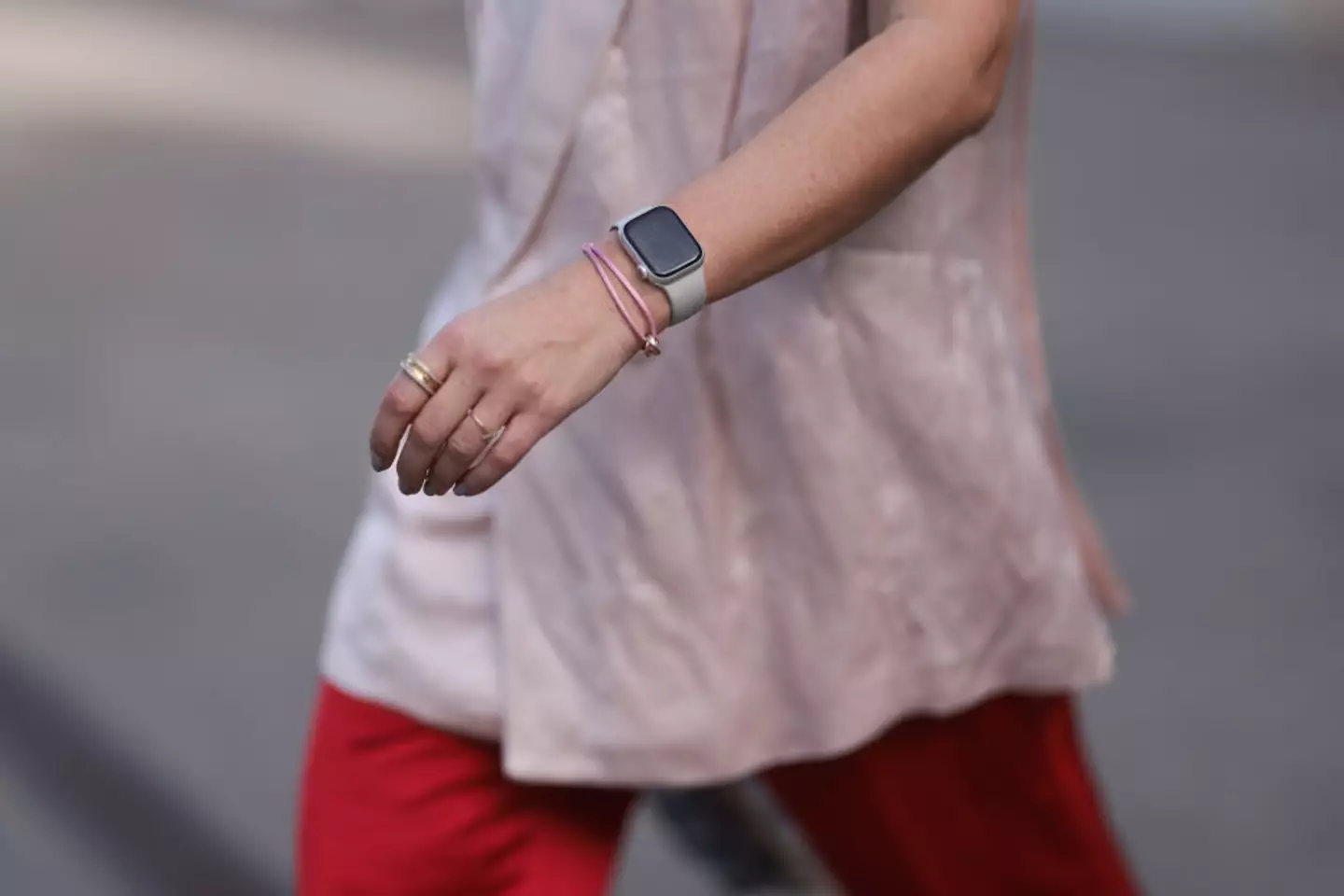
Your best bet is to keep your wrist free of any tattoos if you want an Apple Watch. (Jeremy Moeller/Getty Images)
It turns out that it’s all because of the watch’s photoplethysmography (PPG) sensors, which use light to detect heart rate and other key information.
Tattoo ink can block light from the sensor, preventing the watch from getting accurate readings.
Apple writes on its website: “Permanent or temporary changes to your skin, such as some tattoos, can also impact heart rate sensor performance.
“The ink, pattern, and saturation of some tattoos can block light from the sensor, making it difficult to get reliable readings.”
So if you want to use your Apple Watch to monitor your heart rate, don’t get a tattoo on your wrist.
Apple recommends connecting your Apple Watch to a Bluetooth chest strap if you’re unable to get accurate heart rate readings from it.
So, those savvier-minded people might look around to find the best deal if they want a shiny iPhone 15. Or, at how to make use of their old one to save some cash.
Of course, a popular way of doing this with iPhones is to trade them back to Apple.
The tech company offers Trade In, where you can get offered a chunk of cash for your device to apply towards getting a new one.
Apple say you can get from £35 to a whopping £630 for eligible iPhones, with Trade In available both online or in store.
But what happens to all those iPhones that get sent off to the company?
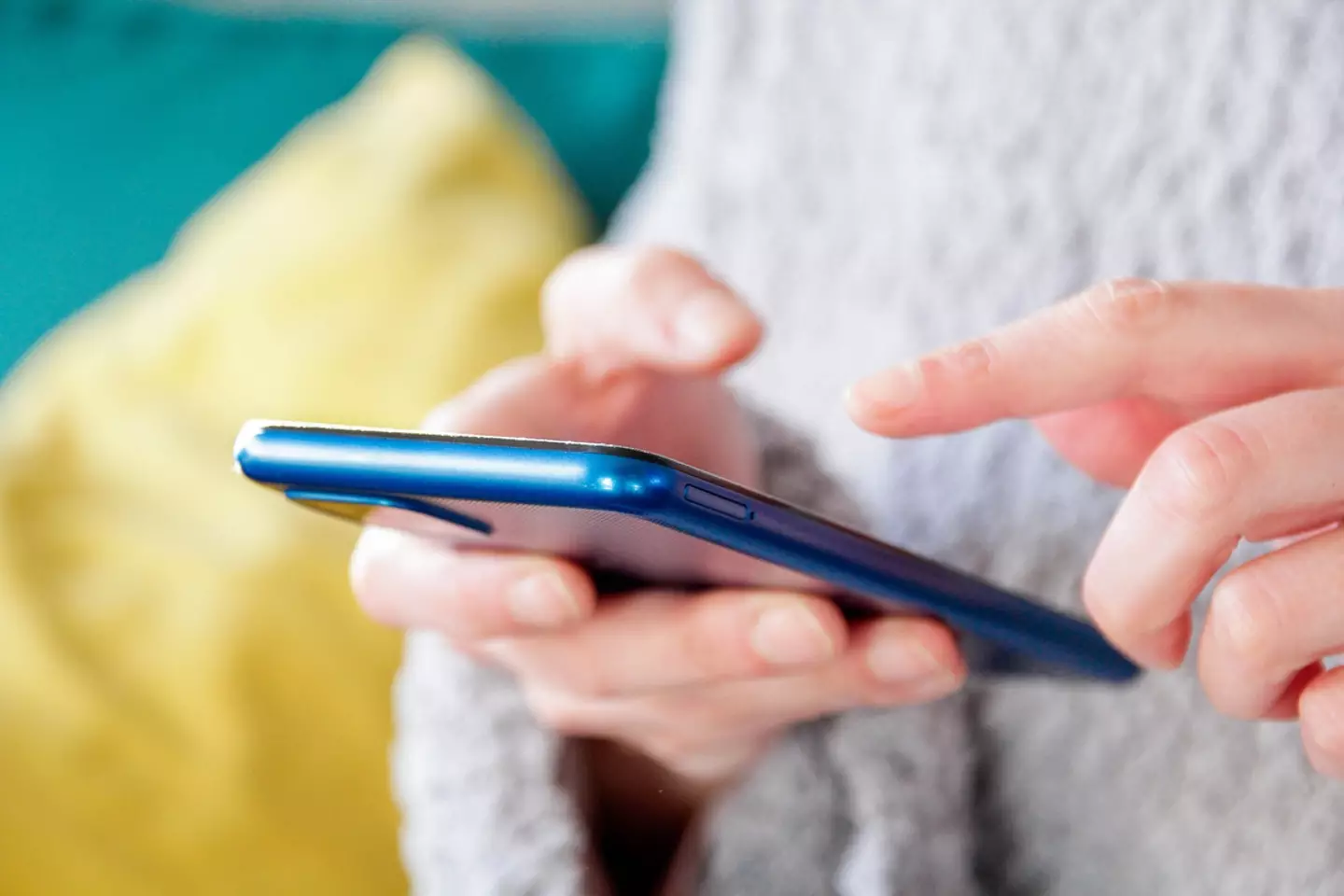
You could get cash for a new phone. (Getty stock photo)
If it’s in ‘good shape’, Apple will help get it to a new owner as a second-hand device. Or, ‘if it’s seen better days’, it will be recycled.
The Wall Street Journal took an inside look into the industry to see the process of trading in iPhones.
The outlet visited U.S Mobile Phones (USMP), which is one of the partners used with over 2.5 million trade-in devices processed last year – most of them being Apple products.
Reporter Joanna Stern followed an iPhone 11 on its trade-in process, with four key steps: data erasure, cleaning, grading and kitting. Essentially, this is how they prepare your phone to be used up again and in what way.
Stern explained: “Two-thirds of the phones that arrive at the USMP facility get data-wiped, cleaned up and sold off to wholesalers, often overseas.
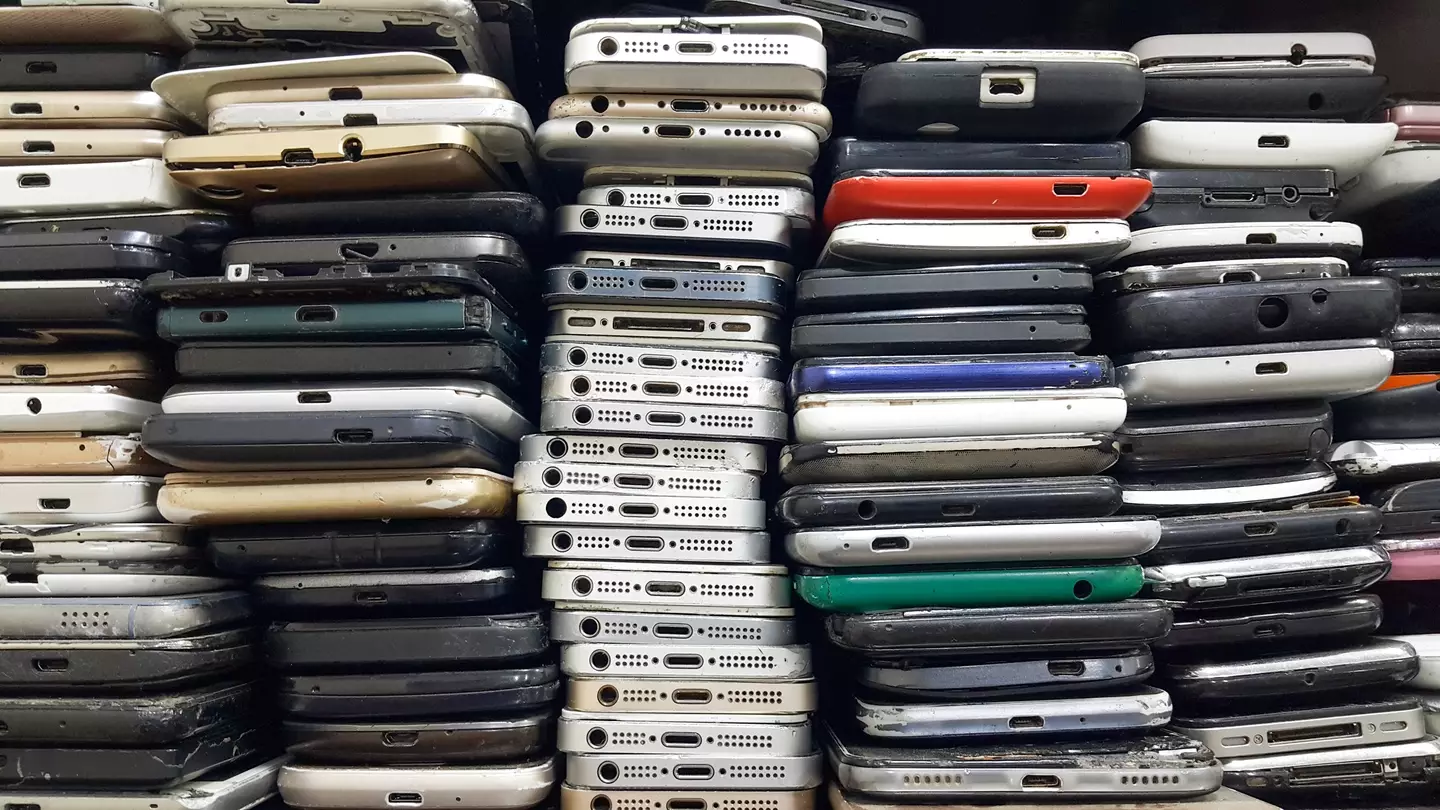
Recycling phones mean they can be reused. (Getty stock photo)
“The other third goes to its sister company, Back in the Box, to be cleaned up, refurbished and sold to buyers on Amazon or Back Market, a popular second-hand-phone marketplace.”
The iPhone 11 ended up being listed for resale at $350 (£281) – meaning a profit was made as the customer will have had $200 (£161) for trading it in.
But, there are some expenses.
Back in the Box CEO Ari Marinovsky explained that even though you may calculate Back in the Box and USMP making up to $100 on that phone, the cost to refurbish the device and Back in the Box’s 10 percent cut eat into the profit.
On top of that, there are plenty of battered phones that end up being sold on at a loss.
Apple also explains what happens if you want to trade in and your phone doesn’t quite meet the requirements for credit: “If your device isn’t eligible for credit, we’ll recycle it for free. It’s a great deal for you and the planet.”
That’s because the tech company updated its ‘obsolete’ list to include an old model of the iPhone.
And if you’ve still got it, there’s not much helping you when things go south.
Essentially, products are considered to be obsolete when Apple ‘stopped distributing them for sale more than seven years ago’.
So, the iconic iPhone 5S was recently added to the ‘iPhone products obsolete worldwide’ list.
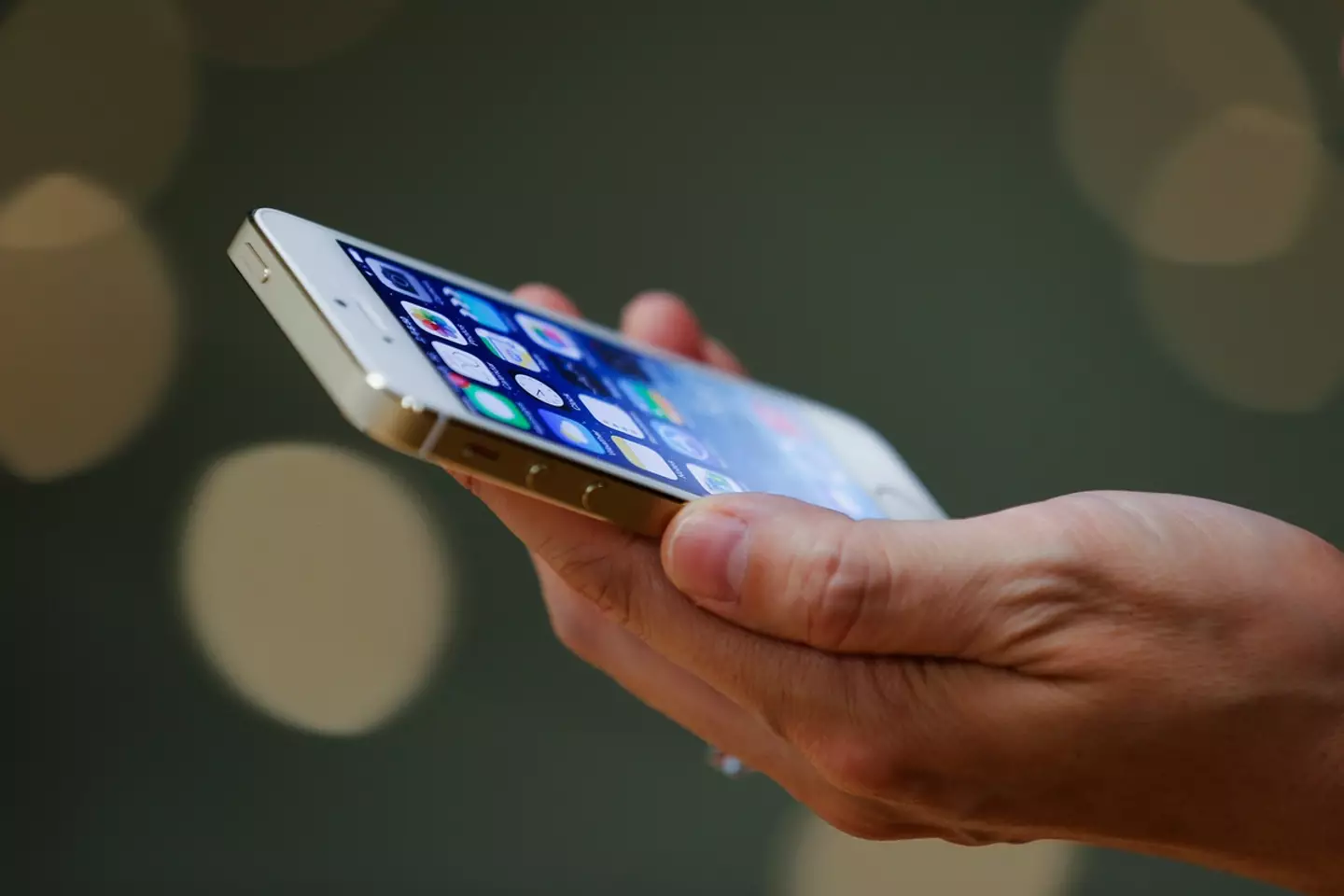
You could end up with a useless phone. (Lintao Zhang/Getty Images)
It joins the likes of the iPhone 5C and iPhone 6 Plus as doomed devices where you’re pretty stuck now if they break. Because basically, they’ll stay broken.
The tech company explains: “Apple discontinues all hardware service for obsolete products, and service providers cannot order parts for obsolete products.”
All the iPhones on this ‘obsolete’ list are:
- iPhone
- iPhone 3G (China mainland) 8GB
- iPhone 3G 8GB, 16GB
- iPhone 3GS (China mainland) 16GB, 32GB
- iPhone 3GS (8GB)
- iPhone 3GS 16GB, 32GB
- iPhone 4 CDMA
- iPhone 4 CDMA (8GB)
- iPhone 4 16GB, 32GB
- iPhone 4 GSM (8GB), Black
- iPhone 4S
- iPhone 4S (8GB)
- iPhone 5C
- iPhone 5S
- iPhone 6 Plus
Just because your iPhone might be considered ‘obsolete’ doesn’t mean it’s going to suddenly shut down on you though.
Instead, it just means that if you’ve somehow still getting by with one of these aged devices, it’ll be truly over if any problems occur.
The support site adds: “Apple discontinues hardware service for certain technologically-obsolete products.”

There’s a list of ‘obsolete’ products. (Costfoto/NurPhoto via Getty Images)
At this point, your iPhone will be well past its warranty period anyway.
Typically, Apple’s smartphones tend to receive between six and eight years of software support, and usually they will become obsolete long after they stop receiving updates.
Oh, and it’s not just iPhones either with MacBooks, iMacs, iPads, iPods and Apple Watches also running their course.
But before a device does become obsolete, some of them get labelled as ‘vintage’. Apple explains: “Products are considered vintage when Apple stopped distributing them for sale more than 5 and less than 7 years ago.”
There aren’t currently any iPhones considered ‘vintage’ but some Mac desktops and laptops are.
If you are still holding on to your beloved iPhone 5C – or somehow an even older model – it might be a good time to finally think about something a little more up to date before you’re technologically screwed.
With Apple having just announced their most recent update, iOS 18, users are wondering which models of iPhone will be able to install the new features.
And if you’ve been holding onto your iPhone for a good few years, you might not be in luck.
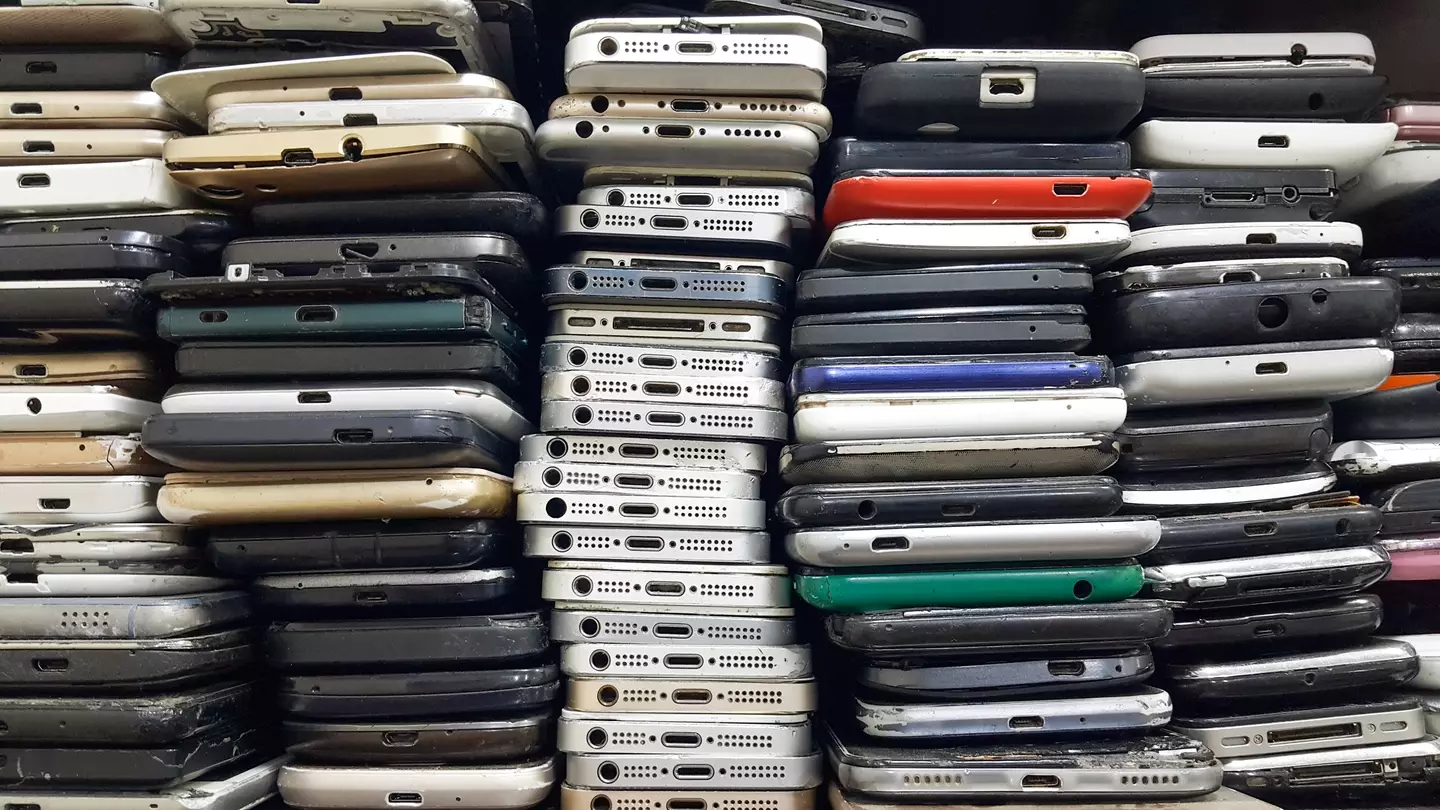
“Apple discontinues all hardware service for obsolete products.” (Filip Radwanski/SOPA Images/LightRocket via Getty Images)
What’s new in iOS 18?
iOS 18 has been branded one of their ‘biggest ever’ updates, with the introduction of new AI technology called Apple Intelligence.
Apple has inked a deal with OpenAI to integrate ChatGPT into Siri, and in future you’ll be able to type in queries rather than just talking out loud to Siri.
Siri is reportedly getting a big upgrade in its language skills and the kind of prompts it can respond to.
In a more controversial update, the new iOS includes the ability to lock certain apps and hide them in a hidden apps folder – which some say makes your phone a ‘cheaters’ paradise’.
And in a more lowkey upgrade, you’ll soon have the ability to move your apps freely around the home screen for a more personalised look, rather than having them locked in rows and columns.
The iPhones Apple has labelled ‘obsolete’
The new update comes after Apple announced many of its more vintage models were now ‘obsolete’.
When an iPhone reaches its tenth birthday, you can no longer order repair parts for it, which can put you in a bit of a pickle if you own one.

(Getty stock)
The list of obsolete iPhones is as follows:
- iPhone
- iPhone 3G (China mainland) 8GB
- iPhone 3G 8GB, 16GB
- iPhone 3GS (China mainland) 16GB, 32GB
- iPhone 3GS (8GB)
- iPhone 3GS 16GB, 32G
- iPhone 4 CDMA
- iPhone 4 CDMA (8GB)
- iPhone 4 16GB, 32GB
- iPhone 4 GSM (8GB), Black
- iPhone 4S
- iPhone 4S (8GB)
- iPhone 5C
- iPhone 5S
- iPhone 6 Plus
The iPhones that won’t be compatible with iOS 18
If you’ve got an iPhone model more recent than an iPhone 6 Plus you might think you’ll be able to enjoy iOS 18. Wrong.
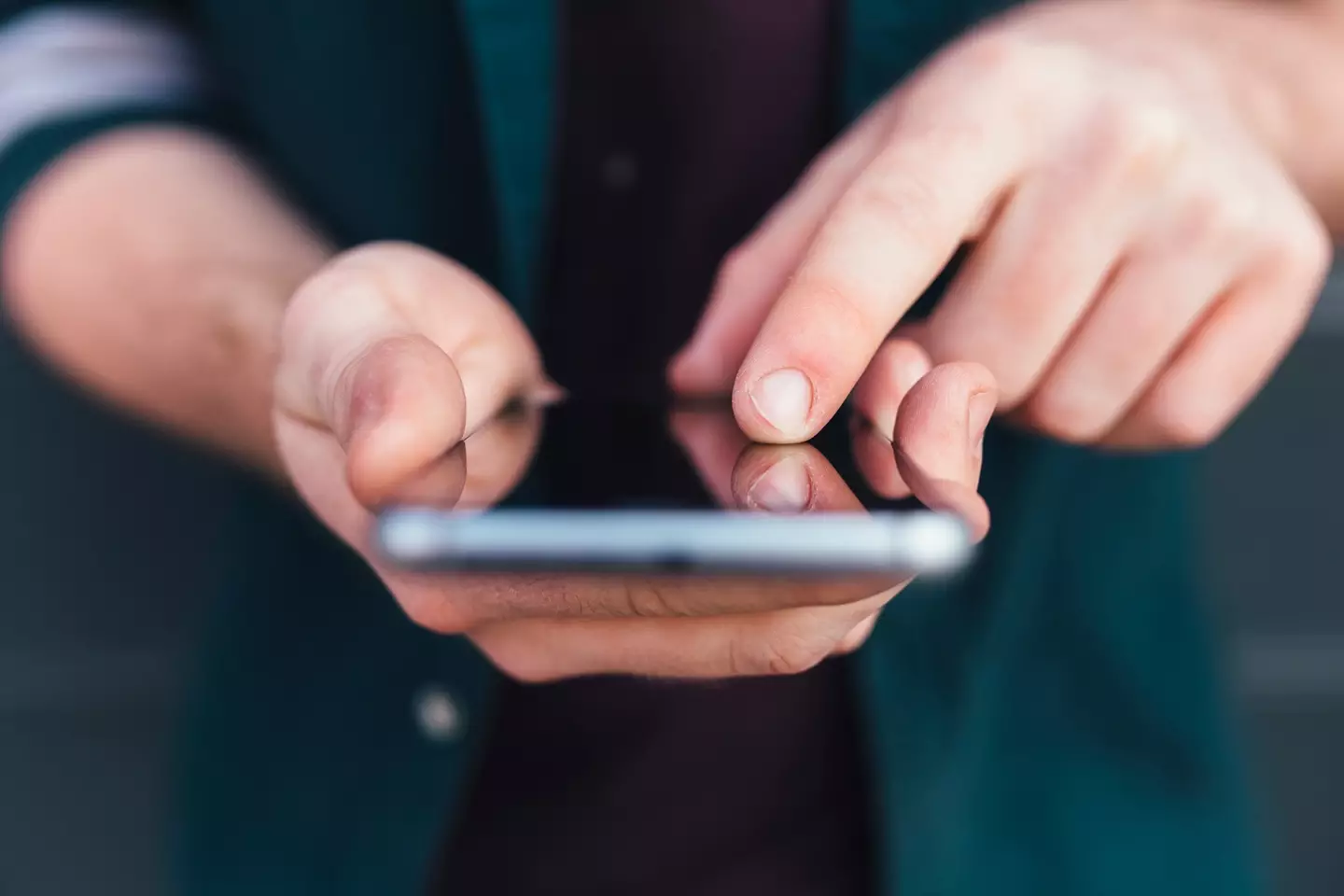
Is your iPhone compatible? (Getty Stock Image/Westend61)
The new iOS update will only be available for models released after 2018.
So, as well as the above list of obsolete iPhones, if you have any of the models below you won’t be able to download iOS 18:
- iPhone SE (first generation)
- iPhone 7
- iPhone 7 Plus
- iPhone 8
- iPhone 8 Plus
- iPhone X
If you’re looking to take advantage of Apple Intelligence, Apple’s fancy new AI upgrade, then only a very select number of iPhone users will be able to use it.
Apple Intelligence is only compatible with the following iPhone models:
- iPhone 15 Pro Max
- iPhone 15 Pro
So there you have it, don’t have your heart set on the fancy new iOS 18 features if you’re still rocking an iPhone that’s a fair few years old.


